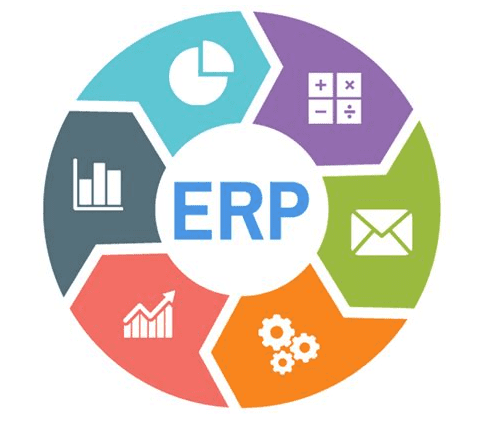Erp synergy
Welcome, business enthusiasts! Have you ever wondered how ERP solutions can truly revolutionize your business operations? The power of ERP synergy lies in its ability to seamlessly integrate various departments, streamline processes, and provide real-time insights for better decision-making. In this article, we will explore how ERP systems can transform your business and take it to new heights of success. So, buckle up and get ready to unleash the full potential of ERP in your organization!
Understanding ERP Synergy
ERP synergy is the integration of different elements within an organization’s Enterprise Resource Planning (ERP) system to create a more efficient and effective overall system. This synergy is achieved when all the modules of the ERP system work together seamlessly, sharing information and functions to streamline processes and improve decision-making.
One key aspect of understanding ERP synergy is recognizing the interconnectedness of the various modules within the ERP system. Each module, whether it be for finance, human resources, supply chain management, or any other function, is designed to work in conjunction with the others. When these modules are integrated effectively, data flows smoothly between them, eliminating the need for manual data entry and reducing the risk of errors.
Another important factor in achieving ERP synergy is ensuring that all departments within an organization are on the same page when it comes to how the ERP system is utilized. This means that employees across different departments should be trained on how to use the system properly and consistently. When everyone is using the system in a uniform manner, data accuracy improves, and decision-making becomes more informed.
Furthermore, ERP synergy can lead to cost savings for an organization. By streamlining processes and reducing inefficiencies, ERP synergy can help organizations cut down on unnecessary expenses and allocate resources more effectively. For example, by having a centralized system for inventory management, organizations can avoid overstocking or understocking of products, ultimately saving money.
In addition to cost savings, ERP synergy can also improve overall business performance. With real-time data available across all modules, organizations can make quicker and more accurate decisions. This can lead to increased productivity, enhanced customer satisfaction, and ultimately, better financial results.
Overall, understanding ERP synergy is crucial for organizations looking to maximize the benefits of their ERP system. By integrating all modules effectively, ensuring consistent usage across departments, and leveraging the cost savings and performance improvements that synergy can bring, organizations can position themselves for greater success in today’s competitive business environment.
Benefits of ERP Synergy
ERP synergy refers to the combined effect of implementing various modules of Enterprise Resource Planning (ERP) system together, resulting in increased efficiency, productivity, and cost savings for an organization. The benefits of ERP synergy are numerous and can have a significant impact on the overall success of a business.
1. Streamlined Processes: When different departments within an organization are using separate software systems, there can be a lack of communication and coordination between them. This can lead to inefficiencies, errors, and delays in decision-making. By implementing an ERP system that integrates all functions and departments, organizations can streamline their processes, improve communication, and eliminate redundant tasks. This results in better coordination between departments, increased efficiency, and improved productivity.
2. Enhanced Data Visibility and Reporting: One of the key benefits of ERP synergy is the ability to have real-time access to data from all areas of the business. This means that decision-makers can quickly gather and analyze information from different departments, allowing them to make informed decisions based on accurate and up-to-date data. With ERP synergy, organizations can generate customized reports and dashboards that provide valuable insights into key performance indicators, trends, and forecasts. This enhanced visibility into data enables organizations to identify areas for improvement, optimize processes, and make strategic decisions to drive business growth.
Furthermore, ERP synergy allows organizations to standardize their reporting processes, ensuring consistency and accuracy across the board. By having a centralized database that stores all relevant data, organizations can eliminate data silos and reduce the risk of errors or discrepancies in reporting. This not only improves the reliability of the information but also saves time and resources that would have been spent manually compiling and reconciling data from different systems.
Overall, the enhanced data visibility and reporting capabilities provided by ERP synergy enable organizations to make better-informed decisions, identify opportunities for growth, and respond quickly to changes in the market. By leveraging real-time data and insights, organizations can stay ahead of the competition, drive innovation, and achieve their business goals.
Implementing ERP Synergy in Organizations
ERP synergy is an important concept that can greatly benefit organizations when properly implemented. It involves integrating different functions and departments within an organization to work together seamlessly, using a centralized system like an Enterprise Resource Planning (ERP) software. Implementing ERP synergy requires careful planning and coordination to ensure that all aspects of the organization benefit from the integration.
One key step in implementing ERP synergy is to involve all stakeholders in the process. This includes not just the IT department, but also key decision-makers from various departments within the organization. By involving people from different areas of the organization, you can ensure that the ERP system is designed to meet the needs of all departments, leading to better integration and synergy.
Another important aspect of implementing ERP synergy is training and education. It’s essential for all employees to understand how the new system works and how it will affect their day-to-day tasks. Providing comprehensive training sessions can help employees adapt to the changes more easily and ensure that the system is used to its full potential. It’s also important to provide ongoing support and training to address any issues that may arise as employees adjust to the new system.
Furthermore, communication is key when implementing ERP synergy. Keeping employees informed about the changes and updates to the system can help minimize resistance to the new system. Transparency and open communication can also help employees understand the benefits of the ERP system and how it can improve their work processes. Regular updates and feedback sessions can also help identify any areas that need improvement or additional training.
Lastly, it’s important to monitor the progress and success of the ERP synergy implementation. Regularly evaluating the system’s performance and gathering feedback from users can help identify any issues and make necessary adjustments to improve efficiency and effectiveness. By continuously evaluating and refining the ERP system, organizations can ensure that they are maximizing the benefits of ERP synergy and driving success across all departments.
Challenges of Achieving ERP Synergy
When implementing an Enterprise Resource Planning (ERP) system, one of the main goals is to achieve synergy across different departments and functionalities within the organization. However, there are several challenges that companies may face in trying to achieve this synergy.
One of the major challenges is the resistance to change from employees within the organization. Implementing a new ERP system often requires changes in processes and the way work is done. This can be met with resistance from employees who are comfortable with the way things are currently done. Overcoming this resistance and getting buy-in from employees at all levels is crucial for achieving ERP synergy.
Additionally, integrating different departments and functions within the organization can be a complex process. Each department may have its own set of goals, processes, and systems in place, making it challenging to align everything under one ERP system. This can result in silos forming within the organization, hindering communication and collaboration.
Another challenge is ensuring that the ERP system is able to meet the specific needs of the organization. Off-the-shelf ERP systems may not be fully customizable to fit the unique requirements of a company. This can lead to inefficiencies and incomplete integration, preventing the organization from fully realizing the benefits of ERP synergy.
Lastly, data quality and consistency issues can also pose a significant challenge when trying to achieve ERP synergy. Inaccurate or incomplete data can lead to errors in reporting and decision-making, ultimately impacting the overall effectiveness of the ERP system. It is important for organizations to establish data governance processes and protocols to ensure that data is accurate, consistent, and reliable.
In conclusion, achieving ERP synergy is a complex process that requires careful planning, effective communication, and a willingness to adapt to change. By addressing the challenges outlined above, organizations can increase the likelihood of successfully integrating different departments and functions under one ERP system, leading to improved efficiency, collaboration, and decision-making across the organization.
Future Trends in ERP Synergy
As technology continues to evolve at a rapid pace, the future of ERP synergy looks promising with a few key trends emerging. One major trend is the increased adoption of cloud-based ERP systems. Organizations are realizing the benefits of cloud-based solutions such as lower costs, scalability, and ease of implementation. Cloud ERP systems also offer better integration capabilities, making it easier for different departments to collaborate and share information.
Another trend in ERP synergy is the focus on data analytics and business intelligence. With the massive amount of data being generated by organizations, it has become essential to harness this data to make informed business decisions. ERP systems are now incorporating advanced analytics and AI technologies to provide real-time insights and predictive analytics. This allows organizations to identify trends, optimize processes, and improve overall performance.
Furthermore, the integration of IoT (Internet of Things) devices with ERP systems is a growing trend in ERP synergy. IoT devices such as sensors and smart devices are being used to collect real-time data from the production floor, supply chain, and customer interactions. This data is then integrated into ERP systems, providing a comprehensive view of operations and enabling proactive decision-making.
Another emerging trend in ERP synergy is the focus on user experience and interface design. As ERP systems become more complex and powerful, it is crucial for organizations to ensure that employees can easily navigate and utilize the system. User-friendly interfaces, intuitive workflows, and personalized dashboards are becoming standard features in modern ERP systems to improve user adoption and productivity.
Lastly, the integration of blockchain technology with ERP systems is a trend that is expected to gain traction in the future. Blockchain offers secure and transparent transactions, making it ideal for recording and verifying transactions in ERP systems. By integrating blockchain technology, organizations can enhance data security, streamline processes, and build trust with stakeholders.
In conclusion, the future of ERP synergy is bright with exciting trends on the horizon. From cloud-based solutions to advanced analytics and IoT integration, organizations are leveraging these trends to improve efficiency, productivity, and decision-making. By staying abreast of these trends and embracing new technologies, organizations can unlock the full potential of ERP systems and drive business success.






